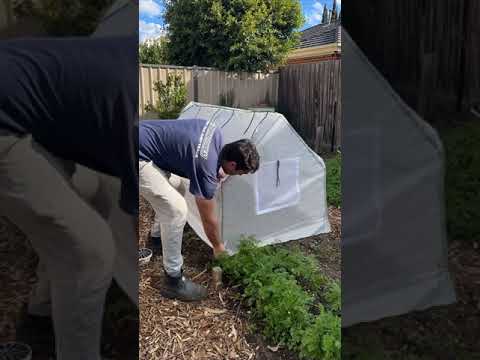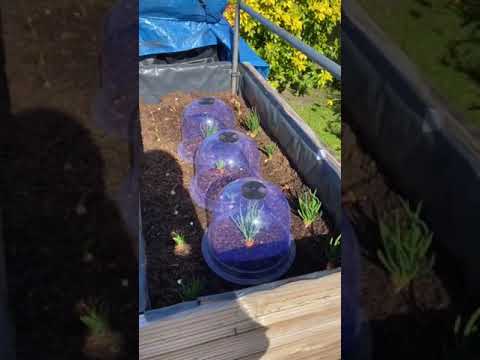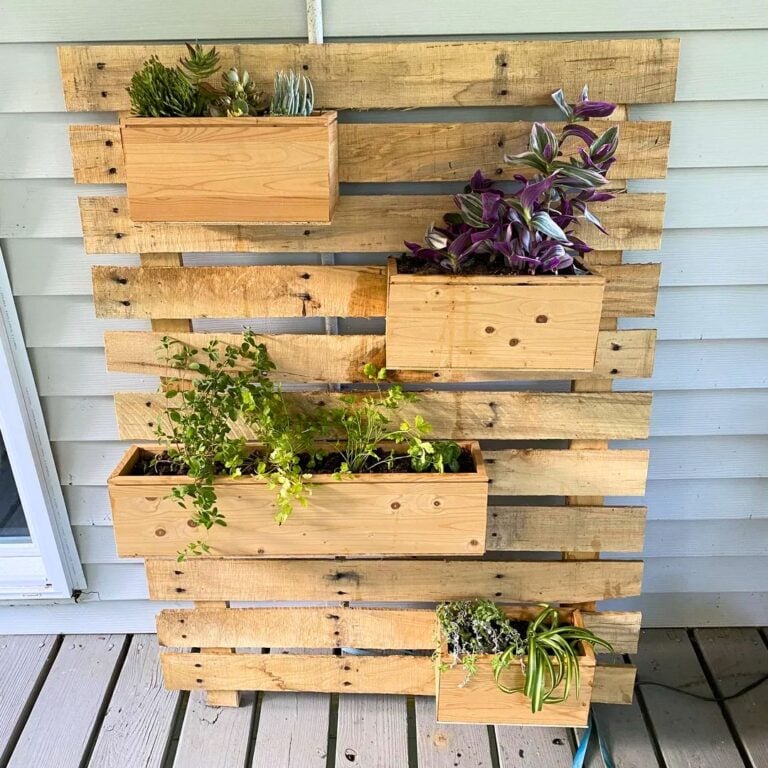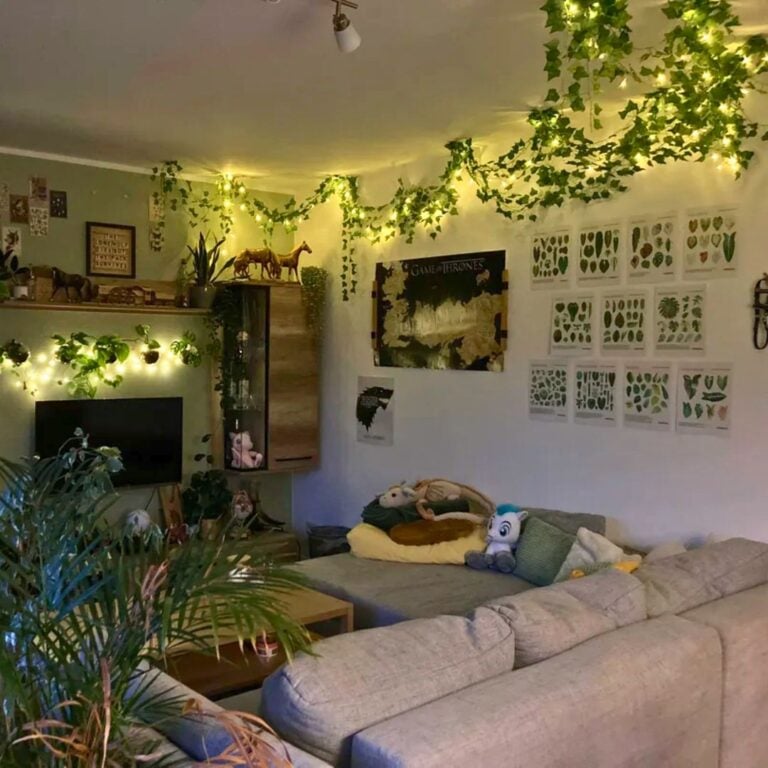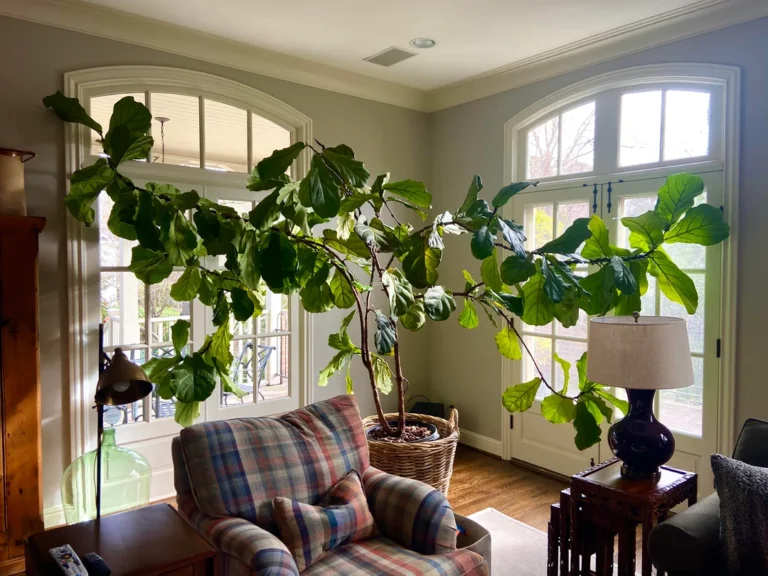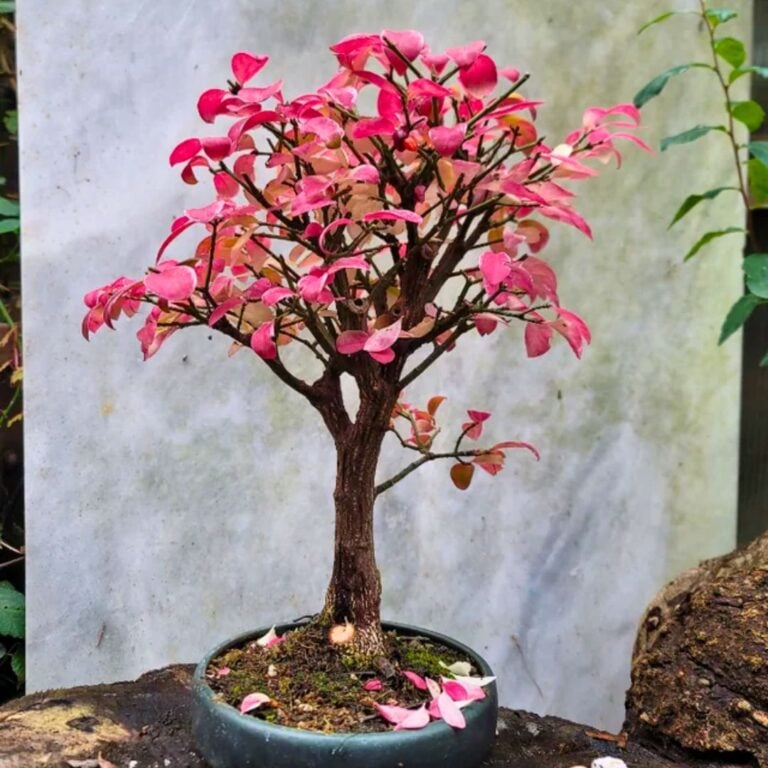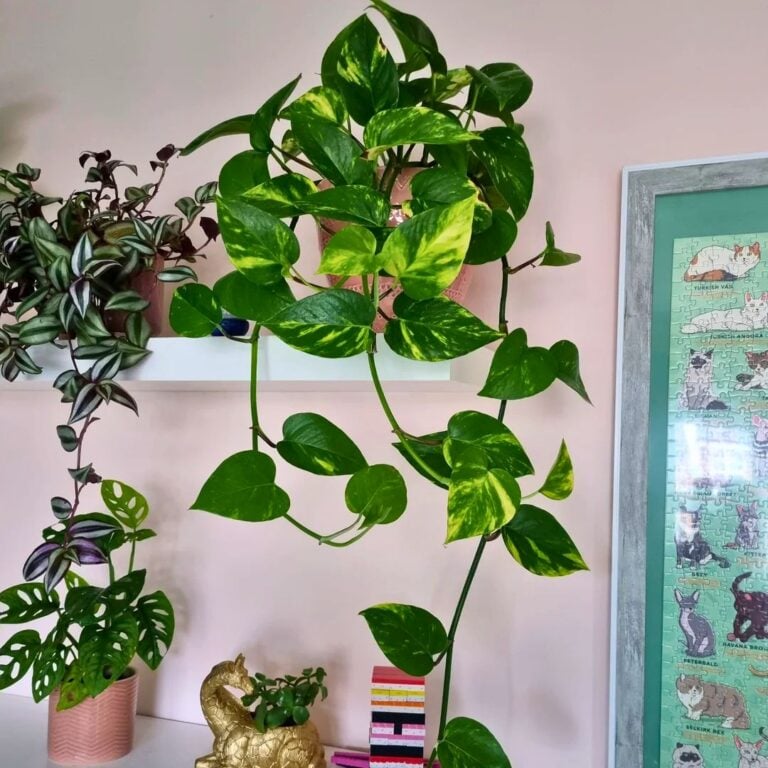8 Greenhouse Projects You Can Build at Home
I absolutely love having plants inside my home. They just make everything feel fresher and brighter, especially when I can keep them growing all year long.
Building a small indoor greenhouse is honestly one of the easiest ways to keep gardening, no matter what’s happening outside. There are so many easy projects out there, even if you don’t have much space or tons of experience.
Please note: Simplify Plants is reader-supported. As an Amazon Associate, I earn from qualifying purchases made by our readers with no extra cost added to you all! Some links in the post are affiliate links and I get a commission from purchases made through links in the post.
1) DIY PVC Pipe Mini Greenhouse
PVC pipes are my go-to for building a mini greenhouse indoors. They’re cheap, easy to find at any hardware store, and honestly, the whole process feels a bit like playing with giant building blocks.
I measure the space I’ve got, cut the pipes, and use connectors to snap the frame together. No fancy tools needed, which is a relief.
After that, I wrap the frame with plastic sheeting and tape it tight so the warmth stays in. Sometimes I’ll add a zipper or a little flap just to make watering easier—otherwise, it gets annoying fast.
It’s super easy to move or take apart if I need to. If I want to go bigger or smaller, it’s just a matter of swapping out some pipes. PVC is so light and portable, carrying it around isn’t a hassle.
I use this setup mostly for seeds or herbs that I want to keep going year-round. It really helps hold in humidity and keeps drafts away. Watching my plants grow strong during winter is always a win.
Building one doesn’t take much time—maybe an hour or two tops. No need for power tools or a big budget. It’s a fun little project and perfect if you’re short on space.
2) Upcycled Window Frame Greenhouse
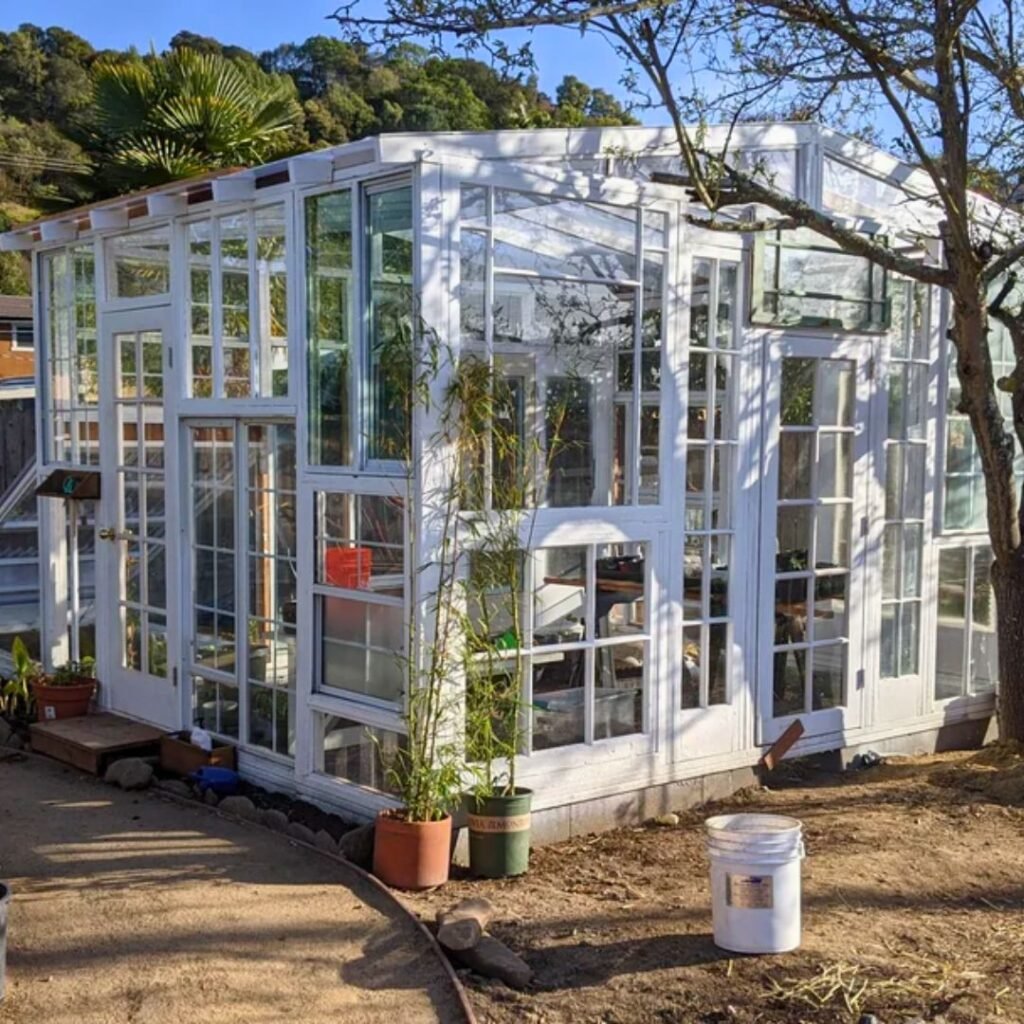
Using old window frames for a greenhouse? It’s honestly one of my favorite ways to recycle and save money. Plus, the sunlight just pours in.
I hunt for window frames at garage sales or recycling centers. After a good cleaning, I connect four to six frames into a box shape using screws or strong brackets.
For the roof, I try to use a frame with hinges. That way, I can pop it open when my plants need a little air. The old glass lets in tons of light.
This setup works great for small plants and seedlings. I usually keep it on a table or shelf. It’s light enough to move around if I want to chase the sun.
Sometimes I’ll add weatherproof stripping to the edges for extra warmth. If it gets really cold, I just toss a blanket over it for the night.
There’s something really satisfying about upcycling old stuff. Watching my plants thrive in their new, eco-friendly home makes me feel pretty good.
3) Cold Frame Greenhouse from Pallets

Old wooden pallets are everywhere, and I love that they’re usually free. Making a cold frame greenhouse from pallets is a straightforward way to protect young plants and stretch the growing season.
I start by collecting a few pallets and lining them up into a box shape, then screw or nail them together until the frame feels solid. Sturdy is key here.
For the lid, I’ll use an old window, clear acrylic, or even just plastic wrap pulled tight. Hinges make it easy to open up for fresh air on warm days.
Inside, I set up pots, seed trays, or sometimes just fill it with soil. The cold frame shields tender plants from chilly winds and sudden cold snaps.
On cold nights, I add straw or bubble wrap around the outside, or toss an old blanket over the top for extra warmth. I do have to check the soil more often—these little greenhouses can dry out quickly.
It’s pretty rewarding to make something useful out of recycled stuff. I can tuck my cold frame into any sunny spot—indoors, on the porch, or near a big window. It just makes indoor gardening feel more doable.
4) Tabletop Herb Garden Greenhouse
Growing fresh herbs right on my kitchen table is honestly one of the best things. A tabletop herb garden greenhouse makes it easy to have basil, parsley, mint, or chives on hand all year.
I grab a small container and a clear cover—sometimes just a plastic box with a few holes for air. Grocery store starter plants fit perfectly, so I don’t even need to start from seed if I don’t want to.
The cover keeps in moisture and warmth so the herbs stay happy. It’s easy to lift off the lid for watering or to snip a few leaves for dinner.
I always set my greenhouse near a sunny window. If the light’s not great, I’ll use a small grow light—herbs need about six hours of light to really thrive.
Watering is pretty simple. I just keep the soil damp, not soggy, and use trays under the pots so things don’t get messy. Too much water is a no-go since roots can rot.
Having fresh herbs within arm’s reach is awesome, and the little greenhouse looks cute too. It’s a quick project that doesn’t cost much, and honestly, it makes cooking more fun.
5) Cloche Dome Plant Protectors
Cloche domes are such a clever way to protect indoor plants. They’re just clear covers that sit over small pots or seedlings, and they help keep everything warm and safe from pests or sudden drafts.
I usually repurpose clear plastic bottles or pick up glass domes from craft stores. Cutting the bottom off a bottle makes a quick cloche, and I can see the plants growing inside.
I just pop a dome over a seedling or young plant. When the plant gets too big or crowded, I take the dome off. It’s like a mini greenhouse—perfect for helping seeds sprout and roots get strong.
They’re small, so I can line them up on my windowsill or squeeze them onto a shelf. If I spot mold or too much condensation, I just lift the dome for some air.
You can use almost anything clear and dome-shaped—food containers work too. Cloche domes make starting plants indoors so much easier, and it’s always fun to watch them thrive.
6) Mini Shelf Greenhouse

A mini shelf greenhouse is a lifesaver when space is tight. I can grow a bunch of plants, even in my tiny kitchen or living room. It just makes indoor gardening feel more manageable.
I start with a small shelving unit—two or three tiers is enough. I make sure it’s sturdy, because pots and soil get surprisingly heavy.
Then, I wrap the shelves in clear plastic sheeting or use a zip-up greenhouse cover. This keeps moisture and warmth in, and I can zip it open to check on my plants or water them.
Light is crucial, so I put the shelf near a sunny window. If there’s not enough sun, I hang a grow light above the plants. That way, my herbs and seedlings stay happy no matter the season.
I like to organize by height—tall plants on top, shorter ones below—so everyone gets some light. It’s easy to swap out plants as the seasons change.
Maintaining it is no big deal. I check the soil, keep an eye out for pests, and unzip the cover if things get too humid. It’s a low-effort way to keep a mini garden going.
Growing basil, lettuce, or even flowers indoors feels pretty satisfying. A mini shelf greenhouse is perfect for anyone wanting a small garden at home.
7) Repurposed Cabinet Greenhouse
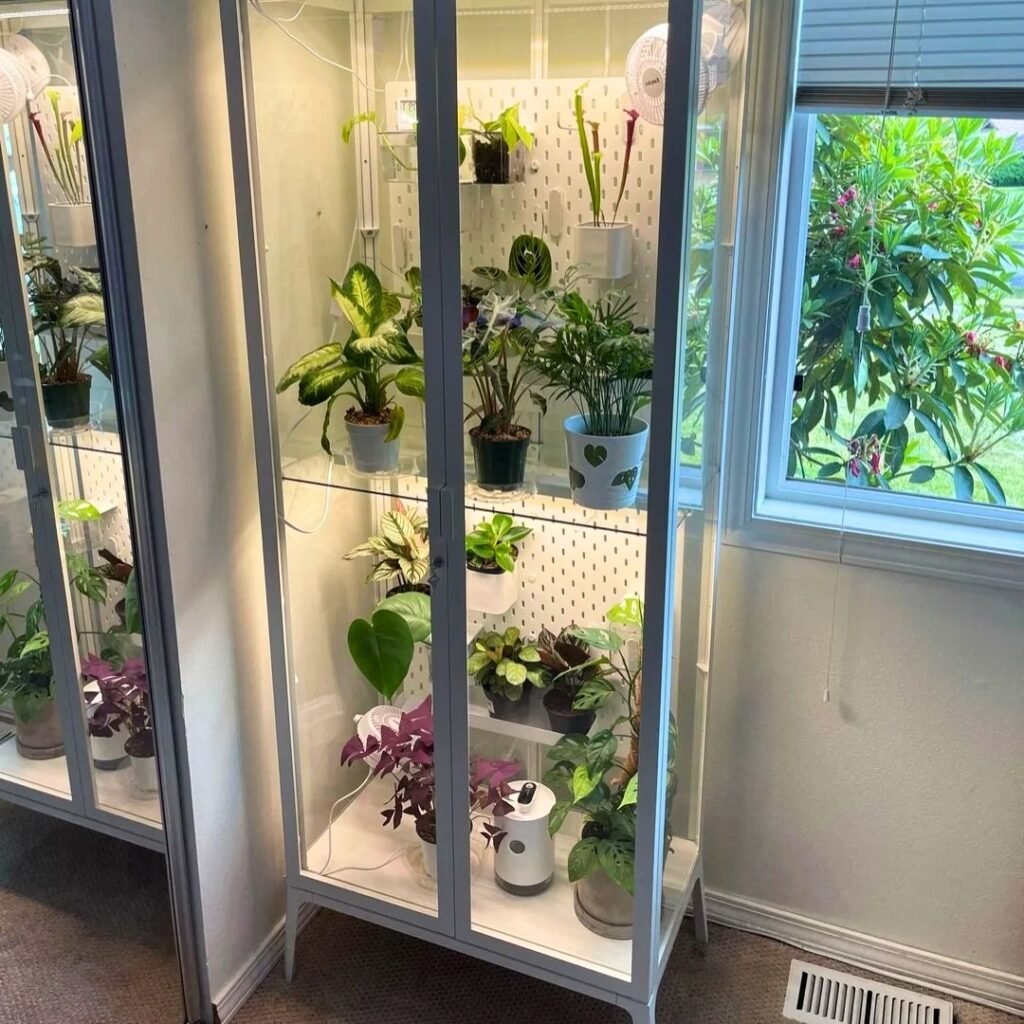
Turning old furniture into something new is just fun. A repurposed cabinet greenhouse lets me recycle and grow plants indoors at the same time.
I look for a glass-front cabinet or bookcase—clean it up, and I’m ready to go. Glass doors let in plenty of light and help keep things warm inside.
Adding shelves is a must, especially if I want to fit both short and tall pots. Sometimes I’ll paint the cabinet, just to give it a fresh vibe.
If there’s not enough natural light, I stick some LED grow lights inside. That way, my plants don’t care if the cabinet isn’t near a window. Some people add little fans, but I usually just crack the doors open now and then.
I pick plants that like warm, humid air. Herbs, seedlings, and houseplants all do well. I mist the leaves to keep the humidity up.
Clear trays or bins on the shelves help with watering—no water stains on my cabinet, thank you! Setting this up isn’t hard, and it adds a ton of charm to any room. Plus, it feels good to give old furniture a second life.
8) Plastic Bottle Terrarium
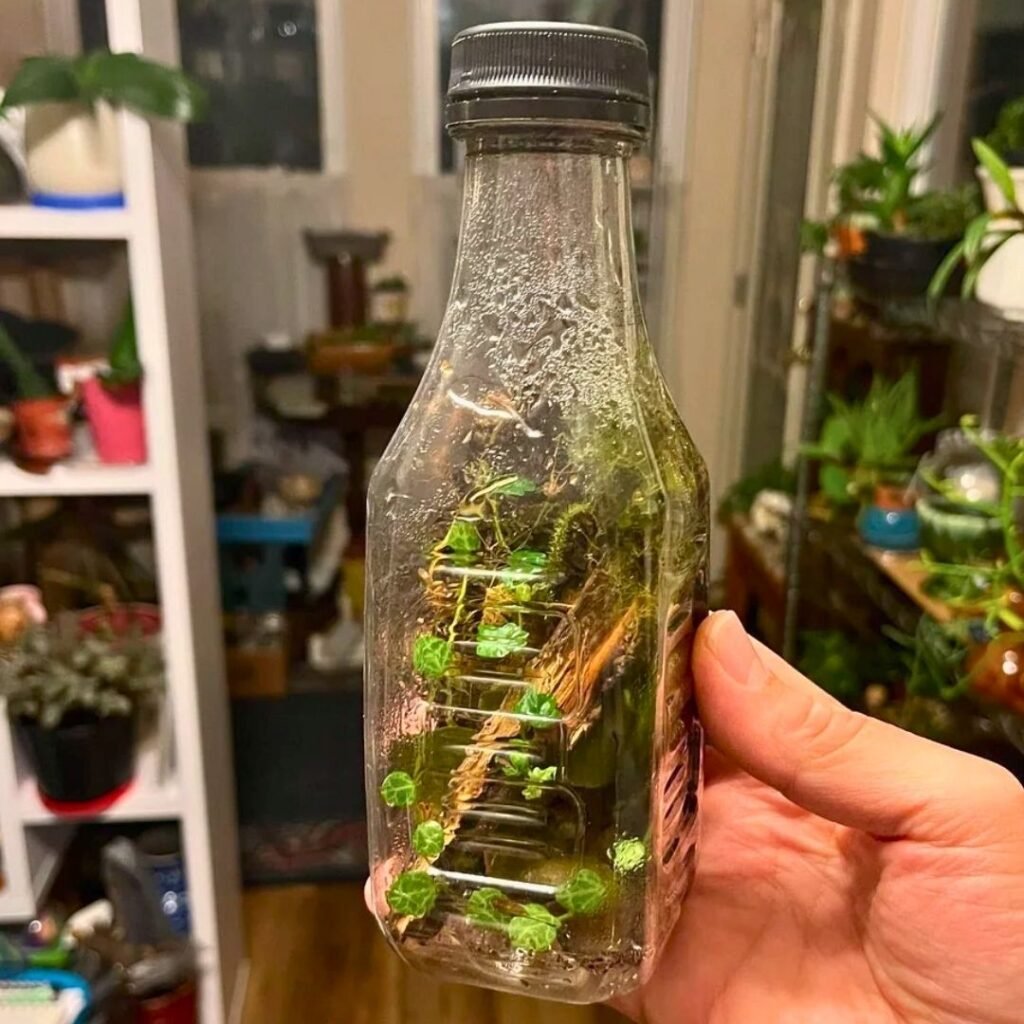
A plastic bottle terrarium might be the easiest mini-greenhouse ever. I like using a clear 2-liter bottle because it’s everywhere and lets in loads of light.
I clean the bottle, peel off the label, and cut it in half. The bottom holds soil and plants, and the top becomes a lid.
I toss a few stones in for drainage, then add potting soil. Tiny plants like moss, ferns, or seedlings fit perfectly.
After planting, I water lightly and pop the top half back on. This traps moisture and creates a cozy, humid home for the plants.
These little terrariums are great for seeing plants up close and don’t take up much space. They fit on a windowsill or desk, which is perfect for me.
I keep mine where it gets bright, indirect sun—direct sun can make it way too hot inside. If condensation builds up, I just take the lid off for a bit.
It’s a super low-maintenance way to grow plants indoors and a nice way to recycle. Plus, it’s kind of fun watching a little ecosystem do its thing.
Essential Tips for Successful Indoor Greenhouses
Honestly, paying attention to the environment, lighting, and which plants you pick makes a huge difference. When I remember those details, my plants just seem to thrive.
Climate Control and Humidity
Keeping the temperature and humidity steady is honestly more important than most folks realize. I’ve got a little thermometer and hygrometer that I check every day, just to keep tabs.
Most plants seem happiest at 65-75°F, with humidity somewhere between 50-70%. If my room gets too dry, I’ll put out a tray of water or run a humidifier for a bit.
Good air flow is crucial if you want to avoid mold. Sometimes I just crack a window for a few minutes, or put a small fan on low.
If my greenhouse feels too hot, I’ll move it away from radiators or other heat sources. For colder corners, I’ll use a little space heater—but I always keep it a safe distance from the plants.
I try not to let things swing too warm or too chilly. Big temperature changes? Plants hate that.
Choosing the Right Lighting
Light is a key factor in plant health, no question about it. A south-facing window is usually my go-to spot for most plants.
If the sunlight’s lacking, I’ll set up LED grow lights or sometimes just a couple of fluorescent bulbs. Matching the light type to each plant’s needs takes a bit of trial and error.
Most leafy greens and herbs do fine with 10-12 hours of light per day. I just use a timer so I don’t forget.
If I notice yellowing leaves or droopy stems, it’s usually a sign the light is too weak or too strong. I move the lights around every few days, depending on how my plants are looking.
Optimal Plant Selection
Picking the right plants honestly makes everything easier. I stick with compact, fast-growing plants like lettuce, basil, or small tomatoes—those are perfect for an indoor greenhouse.
Some plants are just fussier. Peppers and tomatoes, for example, sometimes need a little hand-pollination. I gently shake the stems or use a tiny paintbrush to help out.
Before I bring home something new, I double-check its light and moisture needs. If I want something easy, I lean toward hardy herbs or leafy greens.
If I’m in the mood for a challenge, I’ll try dwarf fruiting plants. They can be tricky, but it’s fun to see if I can pull it off.
Troubleshooting Common Issues
I’ve run into a few headaches with small indoor greenhouses. Most problems come from overwatering or not enough airflow. Watching out for those two things really helps.
Preventing Mold and Pests
Mold is a pain and loves damp, stuffy spaces. I usually run a small fan to keep the air moving.
Opening vents or windows on nice days? That’s a game changer. When I water, I avoid splashing the leaves—wet leaves are basically an invitation for mold.
If I spot fuzzy patches or white powder, I’ll gently wipe the leaves and pull out any plants that look really bad. A quick mix of water and a bit of baking soda can help with early mold.
Pests like gnats or aphids sneak in sometimes. I make a habit of checking under the leaves each week.
If I see bugs, I’ll spray them off with water or use a little insecticidal soap. Sticky traps are pretty handy for catching flying pests.
Here’s what I do:
| Issue | Solution |
|---|---|
| Mold | Increase airflow, allow soil to dry, use baking soda spray |
| Gnats | Let soil dry, use sticky traps |
| Aphids | Spray with water, use insecticidal soap |
Addressing Overwatering
Overwatering? I’ve been there. It’s tempting to give plants a little extra, but too much water just leads to root rot.
I check the soil with my finger—if the top inch is dry, I water. If it’s still damp, I wait.
Containers with drainage holes are non-negotiable. Water pooling at the bottom is just asking for trouble.
If I notice yellow leaves, droopy stems, or soil that smells off, I know I’ve overdone it. I’ll move the plant to fresh soil and ease up on the watering.
I try to let plants dry out a bit between waterings. That seems to keep roots happy. Oh, and I always empty any leftover water from trays under my pots.
Frequently Asked Questions
It’s actually pretty easy to build an indoor greenhouse on a budget. I use simple materials, and tweak things for whatever plants I’m growing. DIY lighting and heating let me garden indoors all year—even when it’s freezing outside.
How can I make my own indoor greenhouse using everyday items?
I’ve made mini greenhouses from clear plastic storage bins or even empty soda bottles. Old window frames stacked and sealed with weather tape also work.
A PVC pipe frame with some plastic sheeting? Super simple, and it gets the job done.
What are the best plants to grow in a DIY indoor greenhouse?
Herbs like basil, parsley, and mint are my favorites. I also love growing lettuce, spinach, and small peppers since they don’t need much space.
For something a bit different, I’ll add succulents or a few small flowering plants for color.
What type of lighting is optimal for an indoor greenhouse?
I usually go with LED grow lights—they’re energy efficient and don’t get too hot.
They give my plants the right light spectrum for healthy growth. I keep the lights on for 12-16 hours a day, depending on the plant.
Can I convert an old cabinet into a functional indoor greenhouse?
Absolutely! I add glass or clear acrylic doors for light, and cut a few vents for air flow.
Some small LED grow lights and trays with drainage turn a regular cabinet into a surprisingly good grow space.
How can I maintain a consistent temperature in my mini indoor greenhouse during winter?
I use a small heat mat or put a space heater nearby (but not too close). Insulating the sides with bubble wrap or foam helps keep the chill out.
I check the temperature often with a basic thermometer, just to be sure things stay steady.
Are there any affordable Ikea hacks for creating an indoor greenhouse?
Honestly, I’m a huge fan of turning an Ikea glass cabinet—think DETOLF or FABRIKÖR—into a little indoor greenhouse. It’s surprisingly doable.
I just toss in some LED strip lights and grab a few plastic trays to catch water or dirt from the plants. Magnetic or stick-on thermometers? Super handy.
Sometimes I’ll add a tiny fan to keep the air moving, and that’s about it. You don’t have to spend a fortune to get a setup that actually works.
Recommended Garden Supplies
| Product Image | Our Recommended Gardening Supplies | Check Offers! |
|---|---|---|
Top Top
Top
Top
Top
Top
Top
Top
Top | rePotme Houseplant and Tropical Classic Potting Soil Mix | Check Offer On Amazon |
 Top
Top
Top
Top
Top
Top
Top
Top | Espoma Organic Indoor Plant Food | Check Offer On Amazon |
 Top
Top
Top
Top
Top
Top
Top
Top | GooingTop LED Grow Light 6000K Full Spectrum Clip Plant Growing Lamp | Check Offer On Amazon |
 Top
Top
Top
Top
Top
Top
Top
Top | Soil Moisture Meter | Check Offer On Amazon |
 Top
Top
Top
Top
Top
Top
Top
Top | Govee Hygrometer Thermometer, Bluetooth Enabled! | Check Offer On Amazon |
 Top
Top | LEVOIT Humidifiers for Large Room(Best For Plants) | Check Offer On Amazon |
 Top
Top
Top
Top
Top
Top
Top
Top | Upgraded DIY Automatic Drip Irrigation Kit, 15 Potted Houseplants Support | Check Offer On Amazon |
 Top
Top
Top
Top
Top
Top
Top
Top | Stainless Steel Heavy Duty Gardening Tool Set | Check Offer On Amazon |
 Top
Top
Top
Top
Top
Top
Top
Top | Bonide Insecticidal Soap | Check Offer On Amazon |
 Top
Top
Top
Top
Top
Top
Top
Top | Bonide 32 oz Spray Neem Oil for Organic Gardening | Check Offer On Amazon |
 Top
Top
Top
Top
Top
Top
Top
Top | Garden Safe Fungicide | Check Offer On Amazon |

